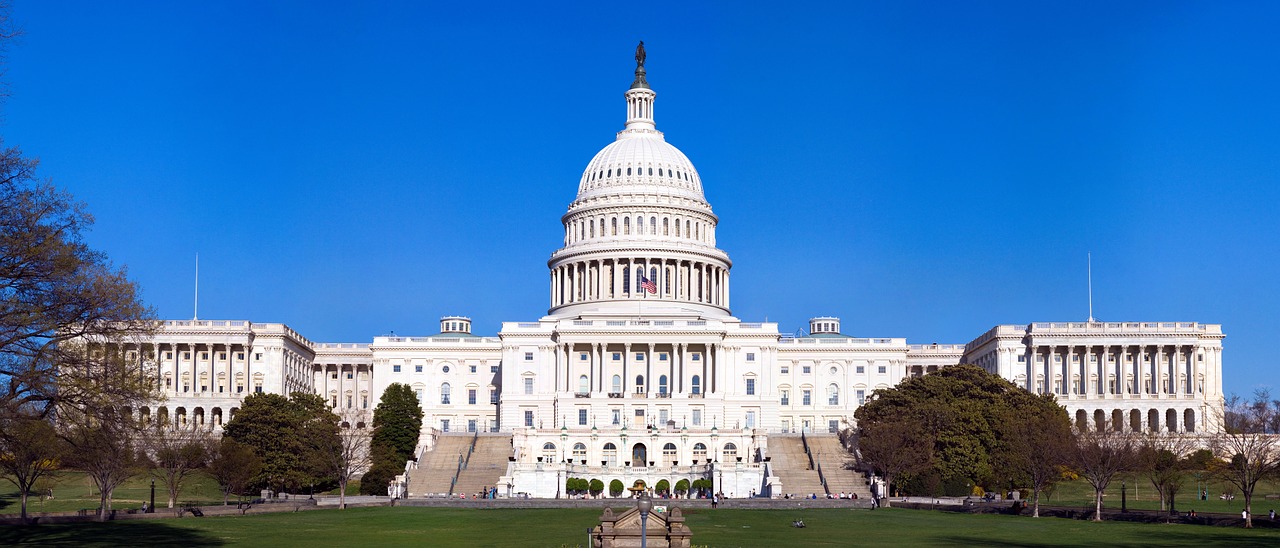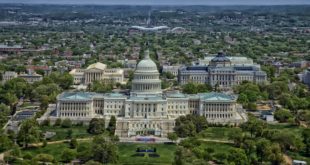
Legislative Review 2017
Codes, Standards and Regulations in the U.S. and Canada
This issue of Sprinkler Age features our 30th annual legislative review. This summary of legislation and codes offers a quick overview of regulations affecting the fire sprinkler industry in individual states and Canadian provinces. The information in these charts was gathered from a survey sent to the fire marshals of the 50 states, the District of Columbia and the provinces of Canada in September 2017. If a response was not received, information that appeared in the 2016 Legislative Review (November 2016 Sprinkler Age) has been reprinted, and the fact that the information is a repeat is denoted by an asterisk (*) after the state or province name in the left column of the chart.
Survey Questions and Responses The 2017 AFSA Legislative Survey asked the following questions:
1. What, if any, national codes have been adopted by your state?
2a. In adopting the national codes, were any amendments or modifications made to the code or referenced standard (i.e., NFPA 13, 101, etc. or state supplemental rules) that affect fire sprinklers?
2b. If yes, what were the modifications?
3a. Which edition of NFPA 13 have you adopted, either directly or indirectly by code reference?
3b. If you haven’t adopted the latest edition of NFPA 13, do you allow local jurisdictions to use the latest edition?
4. Do the codes adopted by your state have a minimum base or a minimum/maximum for enforcement purposes?
5. Is the scope of state code enforcement limited to the type of occupancy and/or other requirements (i.e., public assembly over 100, business over 50 ft, etc.) or is it all encompassing?
6. If buildings are not included in the state jurisdiction, is there a recognized code adoption recommended for local authorities or is it on individual preference?
7. Are you in a code revision/adoption cycle now? If yes, what codes and years do you anticipate adopting?
8. Has your state adopted NFPA 25: Standard for the Inspection, Testing and Maintenance of Water-Based Fire Protection Systems?
9. Does your state have any pending legislation regarding fire sprinklers, more restrictive or less restrictive, for: Hotels & Apartments, Dwellings & Lodging Housing, Health Care, High-Rise, Nursing Homes, Education, Public Assembly, Business Occupancies, Mercantile, Institutional, Other.
10. Are you adopting the 2015 International Residential Code (IRC)? If yes, will it be adopted with the residential sprinkler requirement intact or modified/removed? If modified, please specify modifications.
11. Does your state have fire sprinkler retrofitting requirements for the following occupancies? Hotels & Apartments, Dwellings & Lodging Housing, High-Rise, Health Care, Nursing Homes, Education, Public Assembly, Business Occupancies, Mercantile, Institutional, College Dormitories, Other.
12. Are there any towns/cities that you are aware of that have retrofitting requirements in excess of the state requirement? List a contact person and phone number for retrofitting information.
13. Does your state require a P.E. to do sprinkler design concepts (i.e., identify occupancies and water supply)?
14. Does the Office of the State Fire Marshal have authority over all projects in the state or only over state-owned or state-financed projects?
15. Are there any local jurisdictions that you know of in your state that have residential ordinances for the following occupancies? Single-family, multi-family, high-rise condo/apartment? Please list.
16. Please provide a telephone number that a person can call if he/she has questions about jurisdiction in your state (i.e. State vs. Local Authorities) regarding fire sprinkler plan review/inspection.
17. Does your state require certification of Plan Reviewers? Inspectors?
18. Does your state require licensing for: Fire Sprinkler Contractors? Fire Sprinkler Fitters? Fire Sprinkler Designers? Fire Sprinkler Inspections? Fire Alarm Inspections (separate from sprinkler)?
19. Does your state require licensing for sprinkler drawings: P.E./Architect Seal? NICET Level III? NICET Level IV?
20. Does your state require any of the following for those who perform inspection, testing and maintenance of water-based fire protection systems? NICET Level I? NICET Level II? NICET Level III? Other (e.g., CSA, Local)?
21. Does your state require seismic protection on fire sprinkler systems?
22. Do you require a signed copy of the owner’s certification (see NFPA 13, section 4.3) as part of the working plan submittal?
The tables on pages 30 through 35 provide the answers to most of the survey questions. The table on page 36 provides licensing and certification information (questions 17-19). The tables on page 37 provide the telephone numbers requested in questions 12 and 16 and the answers to questions 20 and 21.
Survey Findings In Canada, AHJs from British Columbia and Manitoba responded. No updates were given regarding pending legislation regarding fire sprinklers in occupancies. For fire sprinkler retrofits, Manitoba indicated health care, nursing homes, and residential care facilities have requirements. Neither province has adopted the 2015 IRC.
Regarding pending sprinkler legislation (question 9) for the 50 United States and the District of Columbia, California has pending legislation for accessory dwelling units. Hawaii has pending legislation for dwelling and lodging housing that is less restrictive and pending legislation for healthcare that is more restrictive. Indiana indicated pending legislation for fire sprinklers “to transfer to the fire code from building code.” New Hampshire follows NFPA 101, Life Safety Code®, regarding fire sprinkler legislation. Oregon is considering legislation for high-rises.
Question 10 concerns the 2015 International Residential Code (IRC). California has adopted it (water supply) and Colorado has adopted it for dwellings associated with public schools. Connecticut indicated it has adopted the code. Washington, D.C. is currently in a code cycle and plans to adopt it. Florida is adopting it for 2017-2018. Maryland has adopted it with no modifications. The 2015 Michigan Residential Code was to become effective in February 2016 and was to adopt by reference the 2015 edition of the IRC with amendments, deletions, and additions deemed necessary for use in the state. Washington state adopted the 2015 IRC but did not adopt chapters 11-25 and notes residential sprinklers, if added, need to meet IRC P2904 or NFPA 13D. West Virginia has also adopted the code but refers readers to section 87-4-5 of the state building code.
Arkansas, Iowa, Maine, Mississippi, New Hampshire New Jersey, North Carolina, Rhode Island, and Virginia are adopting the IRC with the residential sprinkler requirement removed. Georgia House Bill 1196 (2010 legislative session) prohibits any residential sprinkler requirement, past or future. Idaho has adopted the 2012 edition and covers the IBC, IFC, and IRC. North Carolina modified the adopted code with residential sprinkler requirements, townhomes, only, with the option for two-hour fire separation in lieu of sprinkler protection. In Ohio, there are construction trade-offs for the adopted IRC. South Dakota is not adopting the 2012 IRC and indicated the state fire marshal has no authority in most residential occupancies (i.e., one- and two-family dwellings – only six stories or higher).
Arizona, Delaware, Hawaii, Idaho, Illinois, Indiana, Kansas, Louisiana, Massachusetts, Minnesota, Montana, Nebraska, Nevada, Oregon, South Dakota, Utah, Vermont, and Wyoming indicated they are not adopting the IRC. New York has adopted a modified IRC and directs readers to dos.ny.gov/dcea for details. South Carolina has adopted it with modifications and directed readers to see 2012 ICC modifications at llr.state.sc.us.pol/bcc.
In regard to states or local jurisdictions adopting the 2015 IRC, which includes the requirement for fire sprinklers in new construction of one- and two-family homes, there has been a great deal of legislative activity in a number of states during the past couple of years. And, while the legislative charts in this issue indicate the most recent responses received from the individual states, some states did not provide updated information to this year’s survey. Therefore, Sprinkler Age recommends that our readers visit the National Fire Protection Association’s (NFPA) Fire Sprinkler Initiative website, firesprinklerinitiative.org, on a regular basis. Click on the Legislation & Adoptions tab at that site to find the most up-to-date information on local and state adoption of residential fire sprinkler requirements, as well as anti-sprinkler legislation that has been introduced.
When asked about sprinkler retrofit requirements for occupancies (question 11), numerous states indicated they have requirements. Regarding nursing homes, Connecticut, Florida, Georgia, Maine, Michigan, Minnesota, Missouri, New Jersey, and Virginia have retrofit requirements. Retrofit requirements for healthcare can be found in Florida, Maine, and New Jersey. Virginia has requirements for hospitals and Connecticut for elderly occupancies.
Georgia, Maine, and New Jersey have retrofit requirements for public assemblies (PAs). Georgia also has retrofitting for existing PAs as listed in 120-3-3.
For hotels and apartments, Florida, Nevada, and Virginia have retrofit requirements. Connecticut retrofits only hotels. Florida and Nevada have requirements for dwellings and lodging housing. New Jersey retrofit institutional occupancies. New Jersey, Virginia, and Wyoming have requirements for college dorms.
Illinois and New Hampshire retrofit per NFPA 101, Iowa per Chapter 11 of the 2015 IFC, and South Carolina per Section 1103.5 of the 2015 ICC.
High-rise retrofits are in place for California, Florida, Louisiana, New Jersey, and Nevada. Massachusetts retrofits nightclubs. Arkansas has retrofit requirements for I-2 occupancies. Michigan has retrofit requirements pending for college dorms and correctional facilities. Oregon is considering retrofitting high-rises. Nevada has requirements for building occupancies.
When asked about towns or cities having retrofit requirements in excess of state requirements (question 12a), several states indicated “yes;” however, most did not provide a list of cities, towns and/or villages.
Conclusion The AFSA staff has made every effort to provide the most accurate and current information. Because of the time lapse between gathering the information and publication of these charts, changes may have occurred. Also, code adoption cycles/processes vary from state to state, but most statewide codes are updated once every three years. So states that are not listed as considering adoptions within the next year may in fact be initiating the process of reviewing all available codes.
Contact the respective AHJ for more detailed information for particular states. We thank the many individual state fire marshals, deputy state fire marshals, deputy chiefs, fire protection engineers, code specialists, and others who participated in this year’s survey. Some respondents did not provide a specific telephone number for questions regarding jurisdiction over fire sprinkler plan review/inspections. In those cases, we have listed the telephone number for the state fire marshal’s office, with the hope that a state representative can direct contractors to the appropriate authority.
To view the 2017 Legislative Review in PDF format with tables included, visit https://www.sprinklerage.com/wp-content/uploads/2017/12/2017Legis.pdf

 Sprinkler Age A Publication of the American Fire Sprinkler Association
Sprinkler Age A Publication of the American Fire Sprinkler Association
